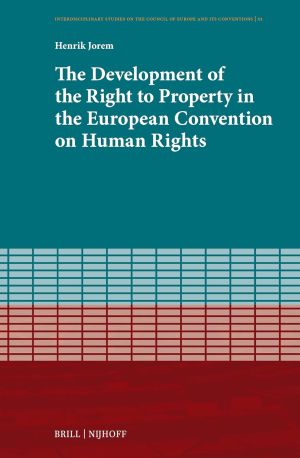We are now closed for the Christmas and New Year period, returning on Monday 5th January 2026. Orders placed during this time will be processed upon our return on 5th January.

The right to the peaceful enjoyment of property is one of the most frequently invoked rights in the European Convention on Human Rights (ECHR). It is also one of the most complex and least understood. Through the Convention's history, the protection of the right to property has undergone significant development in the case law of the European Court of Human Rights. This book shows how the Court's reliance on the Convention's object and purpose - in particular the rule of law - has served as the main impetus for development. Based on a comprehensive analysis of the jurisprudence, the book analyses the arguments and clarifies the principles governing human rights protection of property rights.